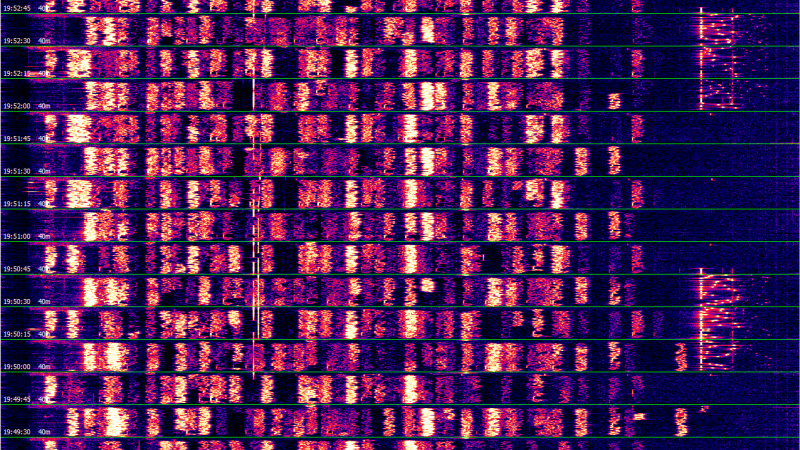There are a number of changes that could be made to the FT8 protocol to make it faster and more resilient to low signal strength. Some of these changes include:
-
Increase the bandwidth: Increasing the bandwidth would allow more data to be transmitted per symbol, which would improve the speed of the protocol. However, this would also make the protocol more susceptible to interference.
-
Use a different error correction scheme: The current error correction scheme in FT8 is relatively simple, and it can be difficult to correct errors when the signal is weak. Using a more sophisticated error correction scheme would improve the resilience of the protocol to low signal strength.
-
Change the modulation scheme: The current modulation scheme in FT8 is based on frequency shift keying (FSK). Changing the modulation scheme to something like quadrature amplitude modulation (QAM) would improve the spectral efficiency of the protocol, which would allow more data to be transmitted over a given bandwidth.
-
Use a different symbol rate: The current symbol rate in FT8 is 31.25 baud. Using a lower symbol rate would improve the resilience of the protocol to low signal strength, but it would also reduce the speed of the protocol. These are just a few of the changes that could be made to the FT8 protocol to make it faster and more resilient to low signal strength. The best changes to make would depend on the specific requirements of the application.
In addition to the changes mentioned above, there are a number of other things that could be done to improve the performance of FT8 in low-signal conditions. These include:
-
Using a better antenna: A better antenna will improve the reception of weak signals.
-
Using a higher output power: A higher output power will increase the strength of the transmitted signal, which will make it more likely to be received by the other station.
-
Using a noise-cancelling filter: A noise-cancelling filter can help to reduce the noise in the received signal, which will make it easier to decode the signal.
By making these changes, it is possible to improve the performance of FT8 in low-signal conditions and make it possible to communicate over longer distances even with weak signals.
Making a digital mode faster means making it less resilient at a low SNR. Shannon had something to say about that. Seems like the question should be how to make it faster or how to make it better at low SNR.
You are correct, but while we are asking things from artificial intelligence, we might as well have our cake and eat it too. :)
@NI6V @ham_bitious I have no real knowledge of any analog to digital modes.
If going for point to point links, could something be done similar to dialup standards? Start an announcement, and then go faster and faster in the announcement. The replies/ack do the same, and they find out how fast the noise allows both directions.
Do you mean make a dial-up modem faster by means of modifying the protocol by which they use to communicate?
If so, the answer is more maybe than anything else. Before broadband manufacturers were doing everything they could to eek out every ounce of speed the POTS would allow them to. So yeah maybe there were some inefficiencies in their protocols, but the differences would not be earth shattering. Also some of the issues were limitations of the POTS.
@NI6V I was thinking of how I think modems negotiate the speed(s) to use, given the capabilities of each, but I also assumed a bit of noise on the lines came in. If some slower speeds could handle noise better, did they get used?
When you were on older equipment ~ESS5 typically your 57.6K modem would connect at a slower speed. The auto-negotiation did work well this way.
We’ve already got FT4, faster, more bandwidth etc. but you are bound to lose the relisiency and it gets jammed much easier.
Kind of want to see if Bard or the newest GPT could pass the license tests. I’m sure the answer is yes. Let’s get ‘em on the air!
Had a play with Google Bard, Looks like all of the changes proposed would step on some rules the FCC has put in place.





